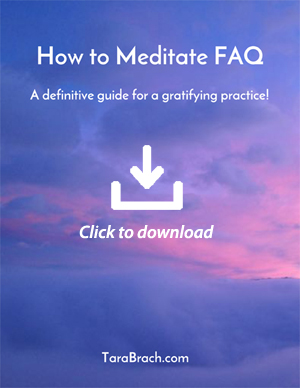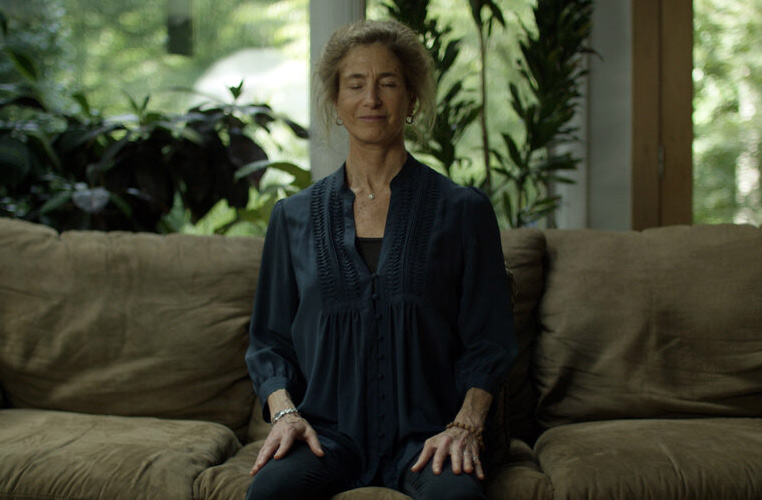It’s another morning, another day of having to live inside a hurting body inherited from a little known, rare genetic condition. I try not to think of how it used to be. I can let go of the younger me, the one who won a yoga Olympics by holding wheel pose for more than eighteen minutes. I can let go of the woman who ran three miles on most days, who loved to ski and Boogie Board, bike and play tennis.
But what about just being able to wander the hills and woods around our home? What about walking along the river? So much has been taken away, and I’m losing strength on all fronts, because most ways of strengthening the muscles injure my joints.
Getting sick, getting closer to death, can unravel our identity as a good, worthy, dignified, or spiritual person. It puts us face-to-face with the core identity of what I call “the controller”—the ego’s executive director, the self we believe is responsible for making decisions and directing the course of our lives. The controller obsessively plans and worries, trying to make things safe and okay, and it can give us at least a temporary sense of self-efficacy and self-trust.
Yet, great loss can unseat the controller, which we often scramble to resurrect by getting busy, blaming others, blaming ourselves, or trying to fix things. Even so, if we are willing to let there be a gap, if we can live in presence without controlling, healing becomes possible.
My controller can hold loss at bay for months at a time. If I can keep doing things—teaching, serving our community, counseling others—the ground stays firm under my feet. But some years ago, right before our winter meditation retreat, my body crashed. I landed in the hospital, unable to teach, or for that matter to read, walk around, or go to the bathroom without trailing an IV.
I remember lying on the hospital bed that first night, unable to sleep. At around 3 a.m., an elderly nurse came in to take my vitals and look at my chart. Seeing me watching her, she leaned over and patted me gently on the shoulder. “Oh dear,” she whispered kindly, “you’re feeling poorly, aren’t you?”
As she walked out tears started streaming down my face. Kindness had opened the door to how vulnerable I felt. How much worse would it get? What if I wasn’t well enough to teach? Should I get off our meditation community’s board? Would I even be able to sit in front of a computer to write? There was nothing about the future I could count on.
Then a verse from Rumi came to mind: Forget the future … I’d worship someone who could do that … If you can say “There’s nothing ahead,” there will be nothing there. The cure for the pain is in the pain.
I began to reflect on this, repeating, There’s nothing ahead, there’s nothing ahead. All my ideas about the future receded. In their place was the squeeze of raw fear, the clutching in my heart I had been running from. As I allowed the fear—attended to it, breathed with it—I could feel a deep, cutting grief. “Just be here,” I told myself. “Open to this.”
The pain was tugging, tearing at my heart. I sobbed silently (not wanting to disturb my roommate), wracked by surge after surge of grief. This human self was face to face with its fragility, temporariness, and inevitability of loss.
Yet as my crying subsided, a sense of relief set in. It wasn’t quite peace—I was still afraid of being sick and sidelined from life—but the burden of being the controller, of thinking I could manage the future or fight against loss, was gone for the moment. It was clear that my life was out of my hands.
On the third day I was walking around the perimeter of the cardiac unit, jarred by how weak I felt, how uncertain about my future. Then, for the ten-thousandth time, my mind lurched forward, anticipating how I might reconfigure my life, what I’d have to cancel, how I could manage this deteriorating body. When I saw that the controller was back in action, I returned to my room and wearily collapsed on the raised hospital bed. As I lay there, the circling thoughts collapsed too, and I sank below the surface, into pain.
I was immersed in the very thing I had been running from. Tibetan teacher Chögyam Trungpa taught that the essence of a liberating spiritual practice is to “meet our edge and soften.” My edge was right here, in the acute loneliness, despair about the future, and grip of fear. I knew I needed to soften and open. I tried to keep my attention on where the pain was most acute, but the controller was still there, holding back. It was as if I’d fall into a black hole of grief and die.
Then, gently, tentatively, I started encouraging myself to feel what was there and soften. The more painful the edge of grief was, the more tender my inner voice became. At some point I placed my hand on my heart and said, “Sweetheart, just soften … let go, it’s okay.” As I dropped into that aching hole of grief, I entered a space filled with the tenderness of pure love. It surrounded me, held me, suffused my being. Meeting my edge and softening was a dying into timeless loving presence.
In the remaining days, whenever I recognized that I’d tightened into anxious planning and worry, I noted it as “my edge.” Then I repeated to myself: “Sweetheart, just soften.” I found that kindness made all the difference. When I returned home, the stories and fears about the future were still there. The controller would come and go. But I had a deeper trust that I could meet my life with an open and present heart.
Consciously grieving loss is at the very center of the spiritual path. In small and great ways, each of our losses links us to what we love. It’s natural that the controller arises: We will seek to manage the pain of separation in whatever way we can. Yet, as we awaken, we can allow our sorrow to remain faithful to itself. We can willingly surrender into the grieving. I’ve found that by honoring the pain for what has passed away, we are free to love the life that is here.
Adapted from True Refuge (Jan. 2013)
Enjoy this talk on No Mud, No Lotus
For more information visit: www.tarabrach.com
Photo Credit: Sergio Tudela


